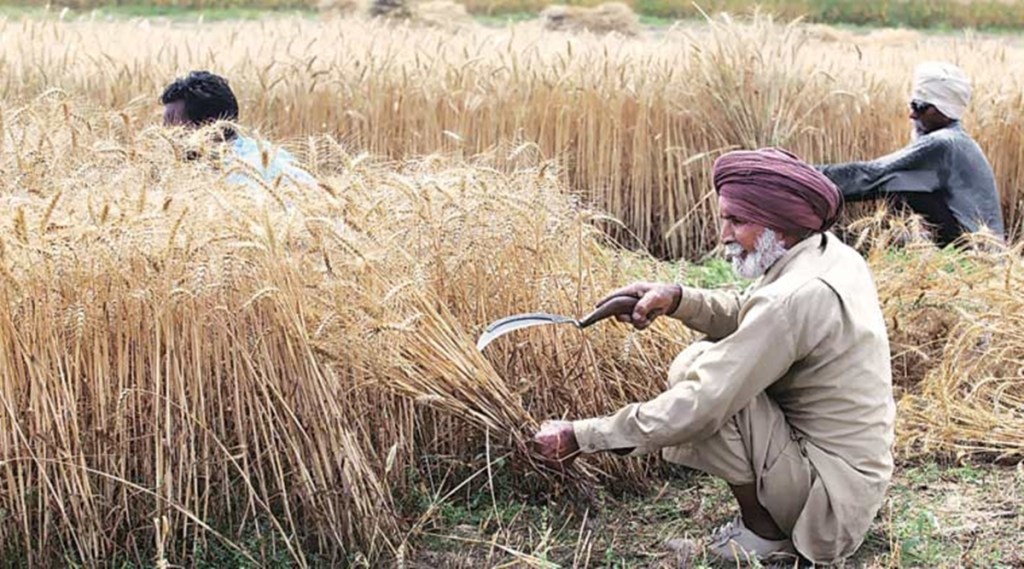The prospect of wheat production and procurement turning out below expectations should cause serious concern, especially when India hopes to supply wheat to the world if the WTO permits it. The scorching temperatures in March have dampened hopes of record wheat production of 111.2 million tonnes in 2021-22 (July-June)—by at least 10% according to feedback from mandis or market places, resulting in premature ripening and shriveling of grains. Wheat yields in vanguard agrarian states like Punjab and Haryana have sharply dropped by 10-15% from last year, which is consistent with crop-cutting estimates conducted on 2,200 sites across Punjab. When wheat is ready for harvesting, the crop on a hectare of land is cut and the yield is multiplied to arrive at an estimate of production. Low yields imply that Punjab and Haryana will not meet this year’s targets of production and procurement.
According to a two-part report in this newspaper, extreme heat has increased the shriveled grain percentage to 10-20% in Punjab against 6% prescribed by the Food Corporation of India, leading to a fall in purchases. Punjab has asked for an easing of wheat quality guidelines. The state’s procurement target of 13.2 MT in the on-going rabi marketing season therefore is unlikely to be achieved. This problem is less serious in other wheat growing states like Uttar Pradesh in which farmers provided adequate irrigation to the crop during the heat stress in March. With private trade also stocking up on wheat from mandis at higher than minimum support prices in Madhya Pradesh for exports, the prospects are for achieving only 25 MT as against the official procurement target of 44 MT.
The upshot is that the situation of potential plenty on the food stock front does not obtain at present. The FCI has 19 MT of opening stocks as on April 1 as against the buffer stock norm of 7.46 MT. With lower procurement, officials stocks can just about cover the 26 MT requirements of the public distribution system under the National Food Security Act plus another 11 MT under the Pradhan Mantri Garib Kalyan Anna Yojana, a scheme that distributed grains for free to 810 million people during the Covid-19 pandemic and has now been extended till September. FCI thus may struggle to maintain the buffer norm if some wheat may also be necessary for undertaking open market sales, especially in the latter half of this fiscal. For such reasons, it is perhaps unwise now to push too hard on feeding the world from official stocks even if the WTO relaxes its rules to enable India supply wheat procured at MSPs.
As the soaring temperatures may well be the new normal, India’s policymakers will have to deal with the reality of climate change on a war footing. Farmers suffer huge losses with low wheat yields due to heat stress when there is considerable agrarian distress. Temperature shocks might reduce farm incomes by up to 20-25% in the medium term according to the Economic Survey 2017-18. The need is to bring science and technology to farmers that make crops heat resistant; a comprehensive crop insurance scheme; and more outlays for irrigation that can make the agrarian economy less dependent on the vagaries of the southwest monsoon. To be sure, the global food crisis represents an opportunity for India to supply wheat for the developing world. India’s wheat exports are likely to touch 10 MT this fiscal from 7.85 MT in 2021-22. But the government would do well to allow private trade to do the heavy lifting on exports rather than running down official stocks considering the lower-than-expected levels of production and procurement.

